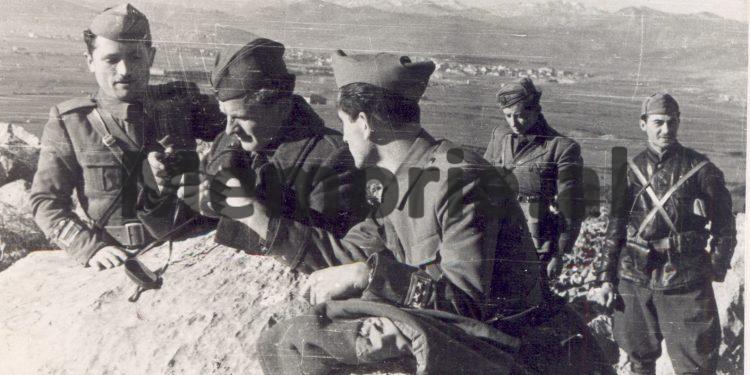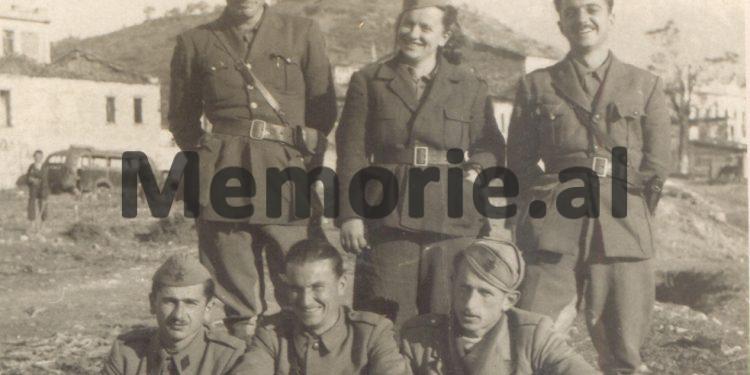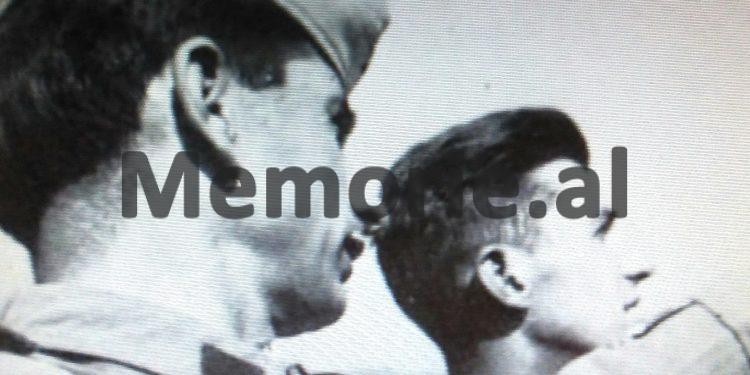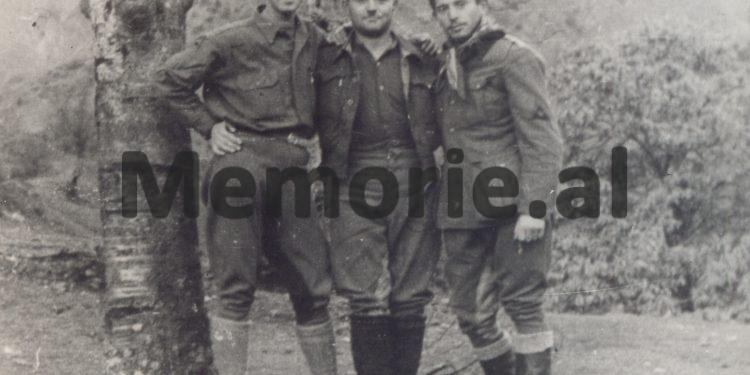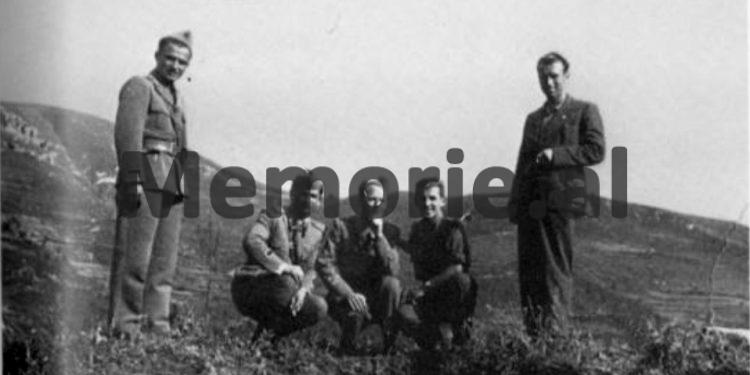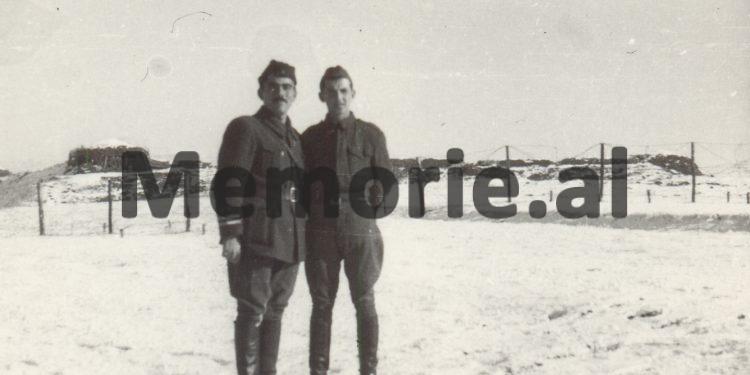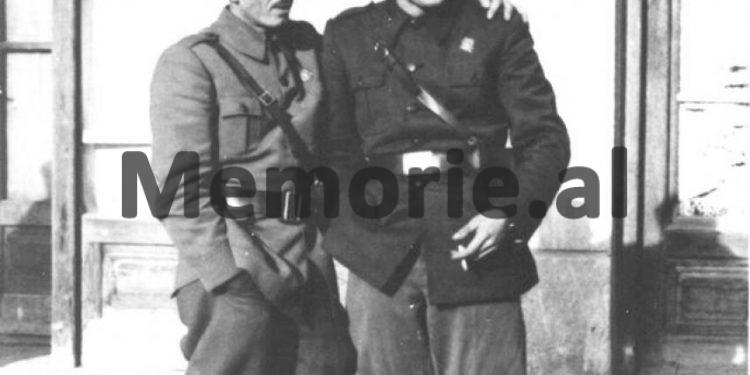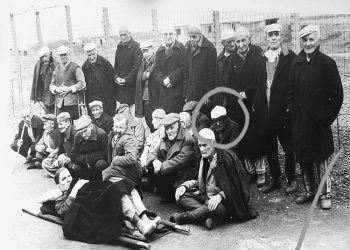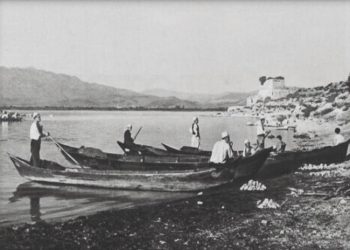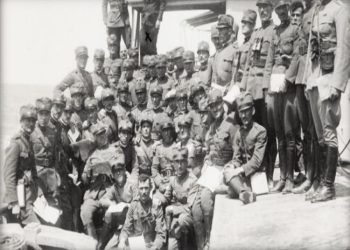Memorie.al publishes some obscure photos with rare images of former Communist leader of Albania and head of state, Ramiz Alia, dating to and after the War in 1943 – ’47, where he came up with some of the his comrades and comrades-in-arms, leading cadres of partisan war, such as: Hysni Kapo, Gjin Marku, Rrahman Parllaku, or with Yugoslav emissaries Velimir Stojnic and Nijaz Dizdarevic, photos which were kept in the LPS archive throughout the Communist regime never published in publications of history books or albums published on the occasion of the jubilee anniversaries of the “Anti-Fascist National Liberation War” …
As the Communist leader of the Soviet Union, Joseph Stalin, had done in his home country since the war and then alive, greatly promoting and propagating “the cult of the individual” and “his leading and decisive role” as in World War II and then in the socialist construction of the country, they duplicate it, and so did most of the communist leaders of Eastern European countries who were and remained loyal satellites and vassals of the Soviet Union and Stalin.
One of them was Enver Hoxha who, shortly after the end of the War in November 1944, (having assumed the rank of Colonel in the Congress of Permet), and throughout his life until he died in April 1985, was careful to adjust his image. This happened not only in official historiography textbooks and textbooks that read “his life and his war”, but also everywhere where his image was featured with various pictures in these texts and albums or in mass media such as Albanian Television, His “New Albania” film studio, where his photos, images and portraits were propagated everywhere.
Thus, much of the attention was paid to Enver’s war-era photos and images that were published and propagated on various albums published and released on the occasion of jubilee anniversaries of the “Anti-Fascist National Liberation War”, many of which were subject to retouching after from 1944 onwards until he was alive, “various hostile groups” emerged almost every year, and almost all of his comrades since the war and then “in the socialist construction of the country” removed from these books and albums by retouching, or not putting in their reprints at all.
The list of collaborators that Enver eliminated is very long, but in addition to those Enver collaborators whose photos were retouched and removed from books and albums, those close associates of the senior leadership of the APL were also unannounced. “Enemies, agents and traitors”, starting with Hysni Kapo, Ramiz Alia, Manush Myftiu, Adil Çarchani, Spiro Koleka, Haxhi Lleshi, Myslym Peza, all the others, did not escape the censorship ?!
So in all the official publications that have been made in various books, textbooks and albums from 1945 until the overthrow of the Communist regime of Enver Hoxha, their photos, mainly those of the period of the “Anti-fascist National Liberation War” (1939- 1944) were quite scarce, although hundreds of photos from the War period were kept and stored in the archives of the Central Committee of the APL. (Much of it was done by Mandi Koçi, a photographer at the Army General Staff, later sentenced to political prison while working as an operator at the Kinostudio “New Albania”).
Thus, e.g. for Hysni Kapon there are no more than two to three War-era photos published in various books, textbooks, and albums, the main one being with Baba Fejzon and Shefqet Peci, as well as two or three others where he has come out with the headquarters of the 5th Attack Brigade. But they are not the best photos of Hysni Kapo, not to say they are the worst images of him. Likewise for Ramiz Alia there are only two photos: one that came out with a large partisan group of the 7th Attack Brigade where Adil Çarcani is located, the other at the Youth Congress in Helmës of Skrapar, and the third one Ramiz came out somewhere in the Mirdita district in 1944 with Bilbil Klos, Zihni Sako and Josif Pashko. But why did this happen, namely the fact that two of Enver Hoxha’s closest collaborators, such as Hysni Kapo and Ramiz Alia, published so few photos pertaining to their activity during the War, while for Enver they were published and published by dozens and dozens of photos ?!
This is quite simple as it was all done to enhance the cult of the individual of Enver Hoxha as the more photos and images of him were published and the more people created illusions and believed what was written about him in books. and texts of official historiography, namely: “his leading and decisive role in the Anti-Fascist National Liberation War”, and the opposite was the case with his close associates, such as: Hysni Kapo and Ramiz Alia, where by not publishing images of their photos, that role was normally diminished.
So from the above we quoted, the War photos for Enver’s close associates were not only scarce, but they were also their most inappropriate photos not only of quality. And all this, so the publication of these books, albums and texts of official historiography (where Enver Hoxha’s image was preserved, curated, and propagated) was made by a decision of the Central Committee of the ASP, and the Institute of Studies was charged with their implementation. Marxist-Leninist led by Nexhmije Hoxha, or by other institutions such as the Political Book Publishing House “8 November”, etc., who had to obtain permission for publication from the Central Committee of the ASP. So, to put it bluntly, what Enver decided to do was “worry” Nexhmija.
But Hysni Kapo and Ramiz Alia were only “the prey of the queue” in terms of publishing their photos and images that belonged to the War period, as this had begun with other Enver’s closest associates, such as the Enver. Koçi Xoxe, Sejfulla Maleshova, Tuk Jakova, Omer Nishani, and others, to finish with Beqir Balluku, Petrit Dume, Abdyl Kellezi, Koco Theodhosi, Mehmet Shehu and Kadri Hazbiu. This is clearly seen by comparing their published and published photos before and after the ’90s. In the above and in this context, Memorie.al is publishing in this writing some rare photos of Ramiz Alia and Hysni Kapo, both belonging to the War period and two to three years later, some of which are published for the first time. first. In those photos, Ramiz poses with Hysni Kapo, or Rahman Parllaku and Gjin Marku, his two War Commanders whom he left in prison even after Enver’s death, where Major General Gjin Marku also died. Likewise another photo is where Ramizi came out with three of his associates and close friends, such as Nako Spiro and Liri Belishova (who had his superior), as well as Fadil Pacrami, where the three had a tragic ending also because of Ramiz.




